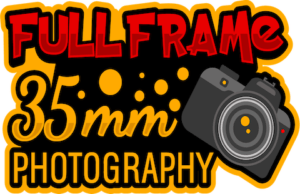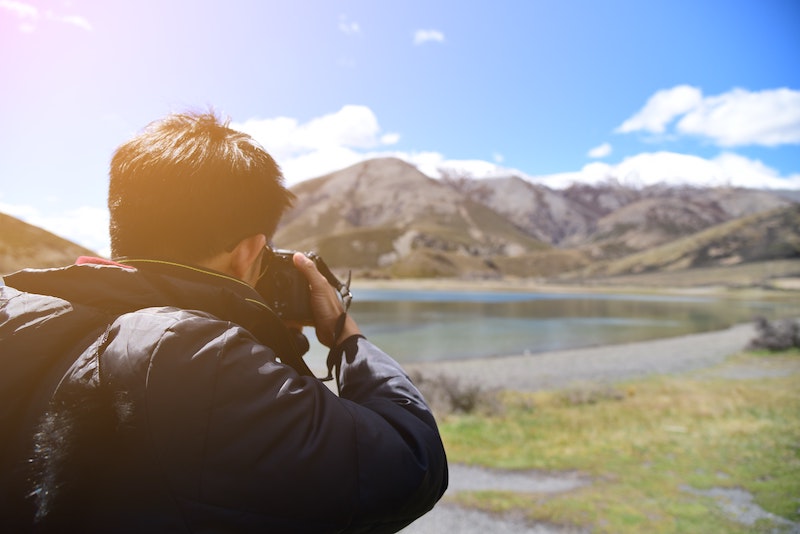When you decide that your next photography challenge is to capture jaw-dropping landscapes, you will want to make sure you have the best digital camera for landscape photography.
Sure, you can capture a decent landscape with almost any digital camera on the market today, but a creative streak often demands a kit that is extra versatile.
You never know what sort of environment you may be heading into, and the weather can often surprise you. For these reasons, you want a digital camera that gives you options for coping with any challenge.
Landscape Photography and Digital Camera Speed
If you are focusing exclusively on landscapes, then the speed of your camera will be low on your list of priorities.
Mountains, trees, and valleys make the perfect subjects. They generally stay put and will give you plenty of time to frame your shot and get your settings right.
If you’re finding it tough to keep your mountain view in the frame because it keeps moving, then it might be time to vacate the area.
A favorite tool for landscape photographers is the tripod, so high frame rates and the latest tech in AF offer limited advantages.
ISO Settings
Landscape photographers who enjoy capturing the sparkling majesty of the heavens during the evening hours will want to pay some attention to the available ISO settings.
A high range of ISO settings will give you advantages in a wide array of lighting conditions such as capturing the stars, a setting moon, or a sunrise at the crack of dawn.
Apart from these scenarios, your most popular ISO setting will be around 400 while using a tripod, because breathtaking landscape scenes demand the best in image quality and minimal noise.
Image Resolution and Dynamic Range
You will want to go for the highest resolution you can afford if you’re going to capture pixel perfect landscape shots.
Breathtaking landscapes look their best when hanging from a wall on a large print. This means you will want to take advantage of the extra detail only a high-resolution sensor can provide.
A high dynamic range is also preferable when choosing the best digital camera for landscape photography.
Dynamic range will give you an advantage when dealing with the high-contrast present in late afternoon dusk scenes, or images caught during the first rays of dawn.
Coping with the Weather
The best digital cameras for landscape photography will come with weather sealing because mother nature can be temperamental.
Just because you are greeted with blue skies and beautiful sunshine when you first crawl out from your tent, doesn’t mean it will be that way 2 hours later while hiking to your destination.
You don’t want to have to head back to camp or go home because of a little wind and rain. Landscape photographers who stay home during rough weather are missing out on capturing some spectacular shots.
If you have ever been amazed by eye-opening lightning shot perfectly portraying the immense power at mother nature’s disposal, then you know what we are talking about.
Decent weather sealing on your camera is the only way to turn foul weather into a golden opportunity.
If you’re planning on being out in nasty weather with your camera, then you also want a robust camera body that can handle some roughhousing.
Cold fingers and gloves aren’t the best tools for operating the controls of a fully-featured camera, so drops are inevitable. Why ruin a great opportunity just because your camera took a little tumble?
Choose LiveView
Landscape photographers want to know how an image is going to turn out before they take the shot.
Continually looking into the viewfinder to check your framing can be awkward, especially while you are using a tripod and you are standing on uneven terrain.
The best way to ensure you have the settings exactly how you like them without using the viewfinder is to take advantage of LiveView.
Sensor Size
Not every landscape photographer is going to have the budget for both a full frame sensor and a crop sensor. If budget is a primary concern, you are most likely going to choose one or the other.
Most landscape photographers will be opting for full-frame cameras, rather than a model with a cropped sensor. Full frame sensors provide superior image quality because they can capture more detail.
There is more space for pixels, and each pixel can be larger. Pixel density and size are important considerations when you are shooting in low-light conditions.
If you plan on printing large images, then you will also appreciate the extra detail and clarity full-frame sensors can put into each photograph.
You also have more options to experiment with depth of field with a full-frame sensor.
Full frame cameras are well known for being able to achieve a shallow depth of field, especially when shooting at medium and wide angles.
Most landscape photographers will use a large depth of field, but it’s essential to have the ability to experiment. Sometimes, a blurry background or foreground is precisely what the scene needs.
Full-frame cameras have a crop factor of 1:1, which means they can often fit an entire scene into a single shot.
For example, if you are using a 14mm wide-angle lens, then you will be able to make use of the entire angle of view.
If you were to use the same lens on a cropped sensor, it would behave differently depending on the crop factor, and you would not be able to fit the entire scene into the frame.
There are certain situations where a cropped sensor would come in handy.
If you wanted to zoom in for a more intimate shot or capture wildlife in the distance, then a cropped sensor will be able to take more advantage of the lenses you are carrying.
Mirrorless or DSLR?
Mirrorless cameras have come a long way in the last few years, and now that we have full-frame mirrorless, the case for using a DSLR is growing slimmer.
Without the mirror mechanism to worry about, full-frame mirrorless cameras can be smaller, more compact, and more robust.
Cropped sensor cameras such as micro-four-thirds are even smaller still. Many landscape photographers will hike miles to get to the perfect view, so smaller, light-weight cameras will make sense in these situations.
Advanced in-body stabilization on the compact mirrorless cameras may also make them worthwhile to hikers who like to shoot from the hip while they are on the move and don’t have a tripod handy.
Conclusion
Ultimately the best digital camera for landscaping photography will depend on your style of shooting, the level of image quality you are prepared to accept, and of course, your budget.
For supreme image quality and maximum resolution, you can’t go past the Canon EOS 5DS Digital SLR.
If you don’t want the burden of such a heavy kit, then the Sony a7R III offers an exciting compromise with a 42MP full-frame sensor presenting no problems for large prints.
what is the best digital camera for landscape photography The Nikon D5600 is a great budget option, but it is a cropped frame.
However, you do get a lot of features for your money and will have plenty of lens choices without feeling weighed down.


